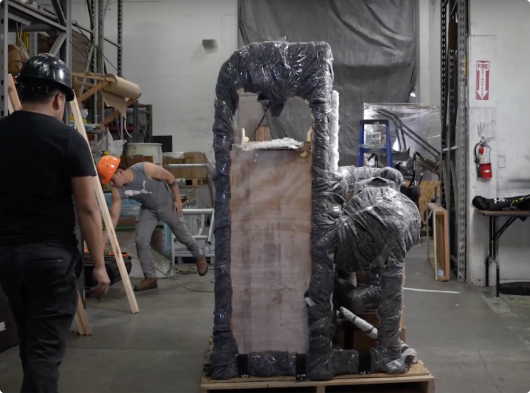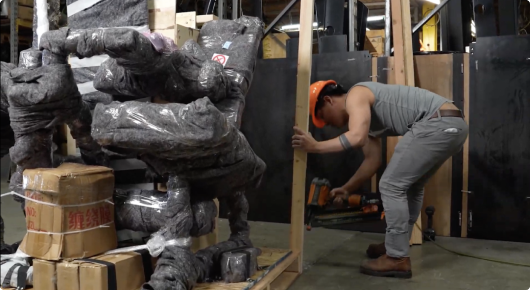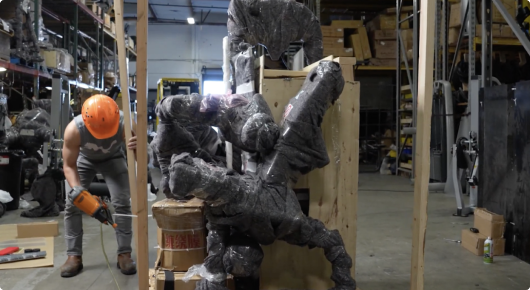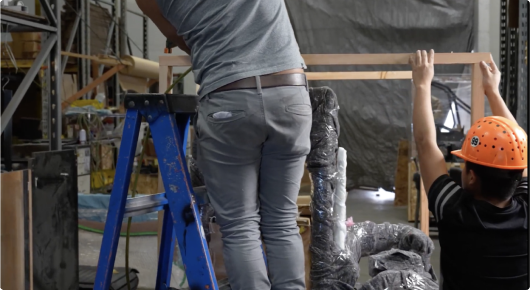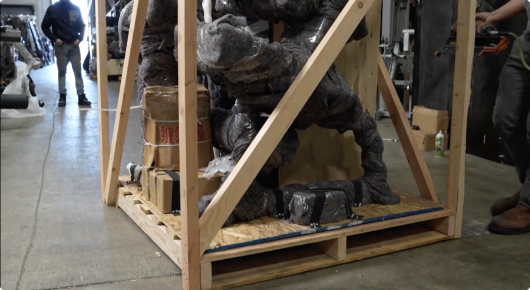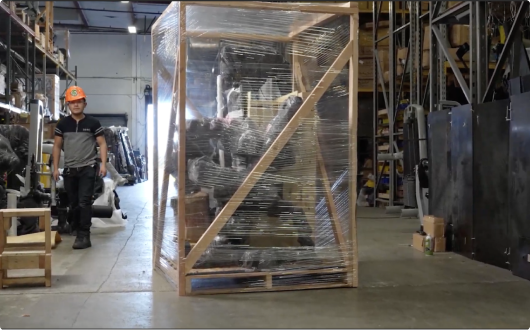Step 1: Preparing the Equipment
Now, we prepare the equipment for the construction of the crate. This involves protecting it with blankets, foam wrap, boxes and wooden blocks. Products packaged in boxes or crates are secured with a strapping machine but we ensure they are not overtightened. We put the heavier products on the bottom, with several layers of heavy-duty stretch wrap on both sides and around the boxes. If the machine is a large frame piece, it is securely tied with polyester woven fabric and other materials, which are used to make the treadmill belt. This material prevents scratches.

